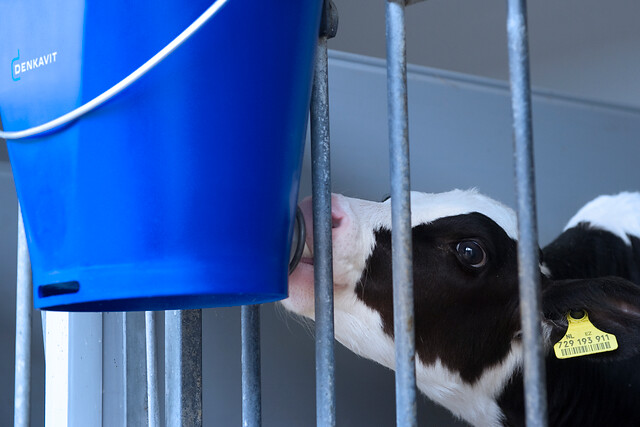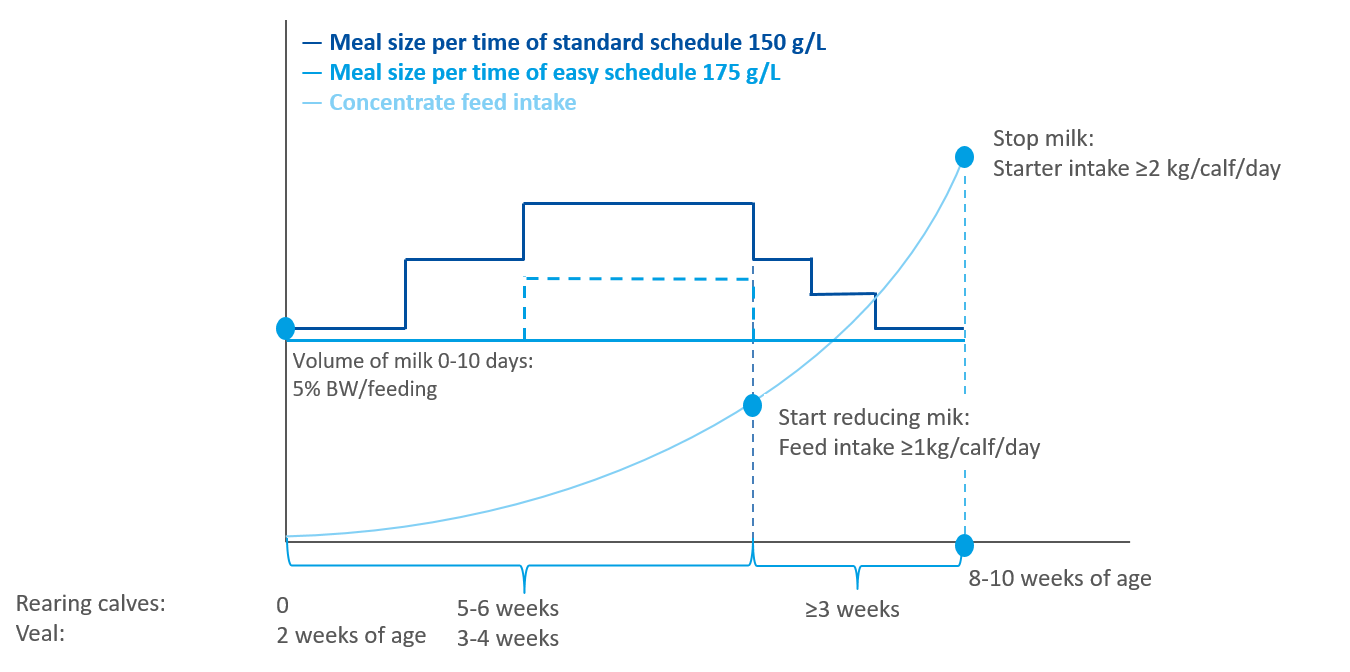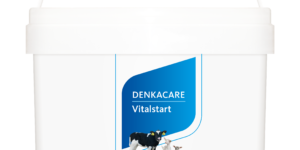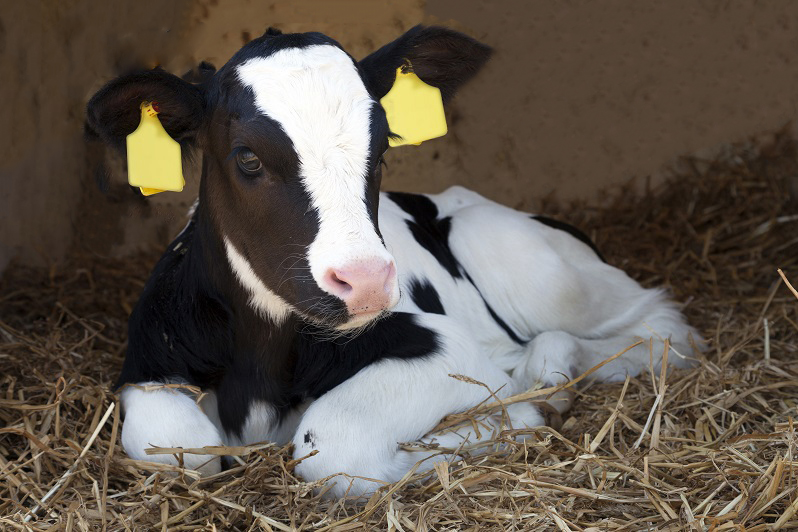How to choose your feeding schedule of calf milk replacer?
 To let calves have a safe and perfect start, and also farms get optimal benefits with reasonable investment, choosing the right feeding schedule of calf milk replacer is essential.
To let calves have a safe and perfect start, and also farms get optimal benefits with reasonable investment, choosing the right feeding schedule of calf milk replacer is essential.
What feeding schedules are available to choose?
We commonly advise two types of feeding schedules, a standard schedule with 150 g/L of milk and an easy schedule with 175g/L of milk (shown in figure 1). They differ in volume per feeding and in the concentration of milk.
The standard schedule at 150 g/L of milk is a safe and widely used option, especially in areas with challenges such as high ambient temperatures or high infection risk. Compared with a lower concentration such as 125 g/L of milk, using 150 g/L of milk shows higher growth rate in the first 2 weeks with the same meal size. This will help to keep the calf healthy and strong through those first challenging weeks. With the standard schedule, farmers increase the feeding volume per time step by step in the first 3-4 weeks and keep the same volume for around 3 weeks then start the weaning period. By using these step-up and step-down phases, you need to make sure the program is adjusted according to the physiological needs of the calves.
For farms with low infection risk and good farm management or farmers who prefer to feed in an easy way, using the easy schedule at 175 g/l of milk is a good option. As shown in figure 1, with the easy schedule, the feeding volume per time could be always kept the same due to the relatively high concentration. Generally, 2L of milk is fed 2 times per day. This feeding schedule is simple to use and effective. If the farmer is willing to feed extra volume to gain better animal performance, a higher volume could be fed during 4-6 weeks of age (as shown in dashed lines in figure 1).
No matter which concentration of feeding program farmers choose, the meal size of milk in the first 10 days has to be 5% body weight to avoid rumen drinking and digestion disorder. As in the first 10 days of age of calves, the abomasum is with limited capacity which is only 5% of calf’s body weight.

When to start reducing the feeding volume?
Concentrate or feed intake is an important indicator of being ready to start the weaning process. When the daily feed intake per calf is above 1 kg/day, the farmer could start decreasing the feeding volume per time step by step. We advise to use a minimum of 3 weeks of step-down to ensure a smooth weaning process.
In the last 1-2 weeks of the CMR period, feeding times could be decreased from twice to once per day to stimulate the feed intake of calves.
When to stop the calf milk replacer?
High starter intake during weaning implies low risk of weaning check of calves. When the starter intake is above 2 kg/calf/day, farmers could stop feeding CMR. It should be noted that the weaning period from starting reducing feeding volume to stop CMR completely need to be at least 3 weeks. In this way, calves have enough time to get used to the feed transition, leading to lower weaning stress. As a result, calves won’t lose body weight when they don’t have milk to drink.






